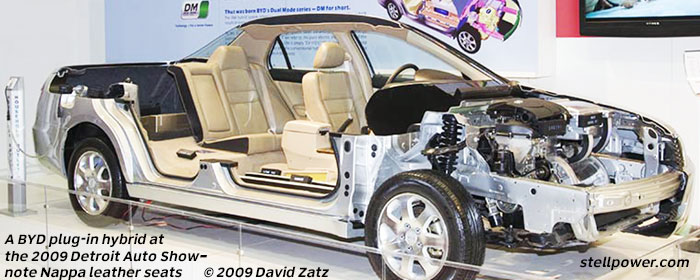Tesla has plants in the United States, China, and, in progress, Germany; the company dominates electric car (BEV) sales in the United States, beating Mercedes and BMW in overall USA sales as well. But it’s not the biggest BEV maker in the world.

That honor goes to BYD, a Chinese company which sells not just electric cars but also plug-in hybrids, and full-size electric buses which are exported to other continents.
Electric cars are expected to grow in Chinese sales by over a third in 2023, reaching 9 million sales. Tesla has seen sales increase, but with competitors growing by leaps and bounds, has dropped to a 10% market share. One reason is because Tesla only sells two cars, a sedan and a crossover; the company recently slashed prices on both to try to regain momentum.
 A recent commercial shows Tesla’s self-driving is unable to avoid humans and won’t stop for school buses.
A recent commercial shows Tesla’s self-driving is unable to avoid humans and won’t stop for school buses.
While Tesla is fairly unique in its marketing claims for “full self-driving,” the CEO’s demand that the system rely solely on cameras has brought numerous crashes and criticism. In China, too, those who buy expensive cars often employ chauffeurs, so occasional “when the conditions are right and there are no school buses around” self-driving isn’t much of a selling point.
Three Chinese companies have similar systems (as do many other companies) which have better performance. Stellantis is slowly rolling out its own system, which like GM’s Super Cruise, performs well under certain conditions, and is marketed more realistically than Tesla’s AutoPilot. The rapid shift in China to BEVs has direct implications for Stellantis as it tries to retrench in the world’s largest economy; one competitive advantage for drivers attempting to cross the vast country may be hydrogen technology. Stellantis is unusual in engineering the same vehicles to be built with either batteries or hydrogen fuel cells.